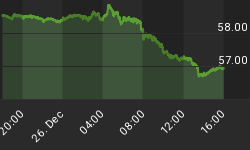In our estimate, the U.S. Treasury will have to raise over $2 trillion dollars this year to finance new obligations. In addition, over $2 trillion in government debt held by the public is coming due and has to be re-financed this year.
My pocket calculator tells me that this requires over $15 billion of government debt to be issued every business day. Note that summer months tend to be bad months to issue debt, as many buyers, including foreign buyers, tend to take vacation. Conversely, it looks like vacation has been cancelled for the U.S. Treasury's debt issuance department.
On Wednesday, the Treasury issued $19 billion in 10 year notes; on Thursday, another $11 billion in 30 year bonds will be sold. Those happen to average $15 billion a day, but these are the highlights of the week and the government will need to ramp up future issuances substantially to meet its funding needs.
However, the government is not the only party issuing debt. A lot of corporate debt needs to be rolled; and a lot of foreign governments and corporations need to raise unprecedented amounts of debt. So far, there seems to be appetite for Uncle Sam's debt, but the cost is rising; at the auction today, creditors demanded a yield of 3.99%, up from 3.6% only a week earlier. It shall also be noted that bonds were trading at a yield of 3.95% at the time of the auction, suggesting the government had to offer an unusually high premium over prevailing market rates to sell the bonds.
In our view, the cost of borrowing may rise dramatically this year; a big unknown is whether the Federal Reserve will allow this to happen, as a spike in borrowing costs could put any nascent recovery into a tailspin. The Fed may step in and finance the deficit - to an extent, this is happening already, as the Fed has been buying government bonds, but the activity would need to be ramped up dramatically to keep borrowing costs low. At this stage, the Fed denies it will print money to finance deficit spending, although this may be more about semantics than substance.
If creditors are not properly compensated for the risk they take (which is the case when the Fed artificially keeps long-term borrowing costs low), the U.S. dollar may fall sharply. It is also possible that the Fed will be overwhelmed by market forces: the Fed may be able to print money, but it is not almighty; we may end up with a weaker dollar and higher borrowing costs.
















